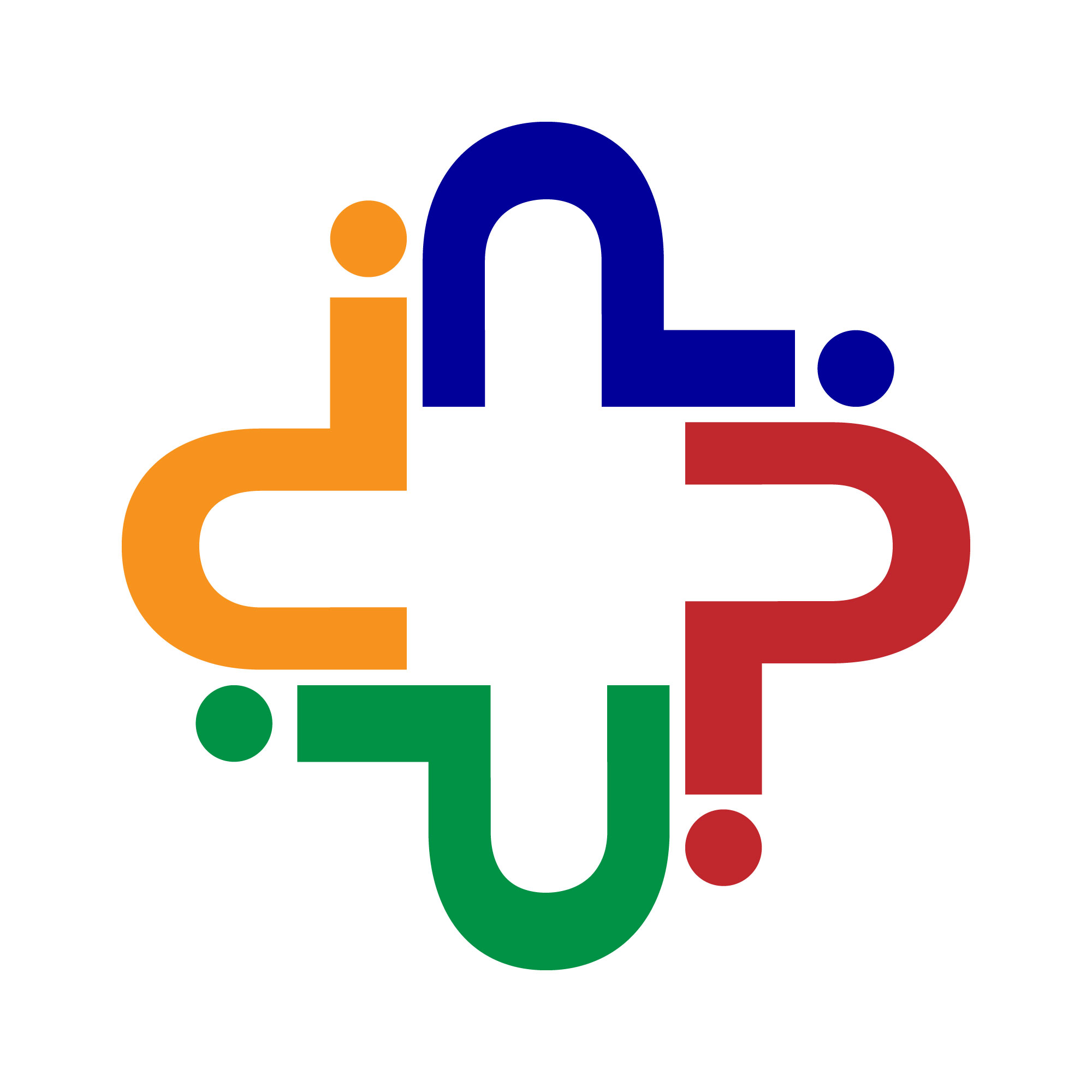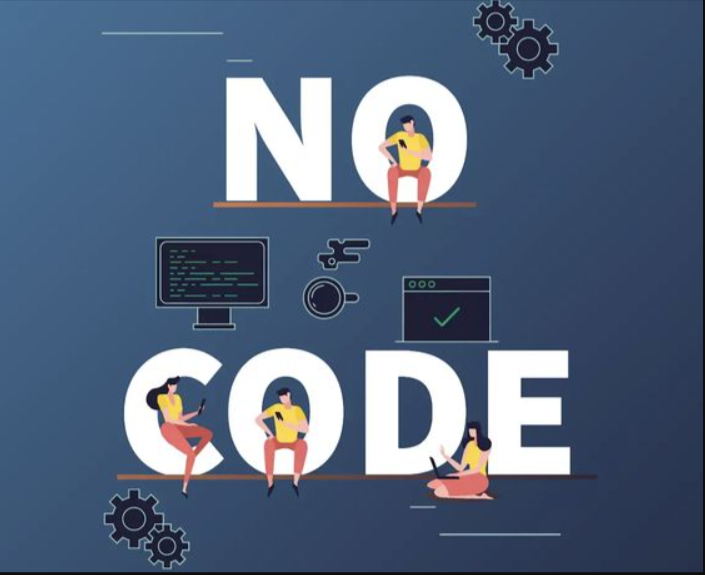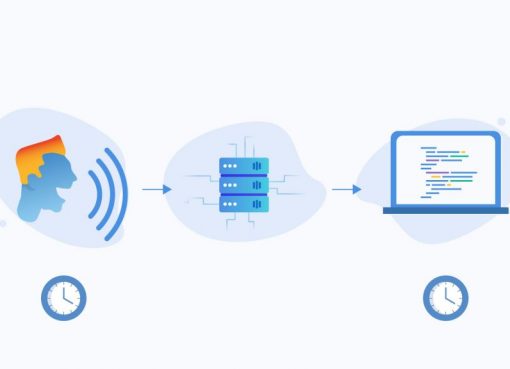In today’s rapidly evolving digital landscape, the demand for custom applications is higher than ever. However, the traditional approach of coding applications from scratch can be time-consuming, costly, and inaccessible to those without coding expertise. Enter the world of no-code app builders, where individuals and businesses can create powerful applications without writing a single line of code. These platforms offer intuitive interfaces, drag-and-drop functionality, and pre-built templates, empowering users to bring their ideas to life quickly and efficiently. In this comprehensive guide, we’ll explore some of the best no-code app builders available in the market, catering to beginners, power users, mobile app developers, and more. Whether you’re a complete novice or a seasoned developer looking to streamline your workflow, there’s a no-code app builder out there to suit your needs.
The best no-code app builder software
- Softr for complete beginners
- Bubble for a balance between power and ease of use
- Glide for creating simple mobile apps
- Draftbit for creating powerful mobile apps
- Zapier Interfaces for automation
- Bildr for flexibility
- Backendless for advanced control over your data and infrastructure
- FlutterFlow for building for multiple platforms
Building an app without code: The requirements
The best no-code platforms offer a seamless visual programming experience, enabling users to craft their apps precisely as they envision, without delving into coding intricacies. Not only do these tools democratize programming for non-technical individuals, but they also streamline development for seasoned developers by handling basic features. Here’s what I scrutinized when assessing each no-code app builder:
First and foremost, true no-code means zero HTML, CSS, or JavaScript. From start to finish, these platforms eliminate the need for manual coding.
Ease of use is paramount. The interfaces are designed to be intuitive, ensuring smooth navigation without technical hurdles. While simpler platforms offer ease of use, more complex ones provide unmatched power, albeit with a steeper learning curve.
Comprehensive help and documentation are essential. Each platform prioritizes user support with comprehensive guides, videos, and resources to expedite learning and troubleshoot issues effectively.
Flexibility is key. Whether it’s a personal project or an enterprise-level app, these platforms cater to diverse needs, ensuring users can build the features they desire.
Active community support is invaluable. From forums to content creators, these platforms foster a vibrant community where users can seek advice, share insights, and learn from experienced builders.
During testing, I embarked on building a basic CRM app on each platform, assessing its capabilities firsthand. From adding contacts to creating deals and dashboards, I tinkered extensively, leveraging online resources whenever I encountered challenges.
Remember, while no code streamlines development, it doesn’t eliminate effort. Prepare to embrace a new skill set and adopt a programmer mindset as you explore these no-code app builders.
The best no-code app builders at a glance
| Best for | Standout feature | Pricing | |
| Softr | Complete beginners | Easy to start using, plenty of useful templates | Free plan available; paid plans start at $29/month |
| Bubble | Balance between power and ease of use | Build nearly anything, great for prototypes and MVPs | Free plan available; paid plans start at $32/month |
| Glide | Creating simple mobile apps | Easy to create good-looking apps, install test apps on your phone | Free plan available for individuals; paid plans start at $25/month |
| Draftbit | Creating powerful mobile apps | You can build native mobile apps, a varied range of data source connections | Free plan available; paid plans start at $29/month |
| Zapier Interfaces (beta) | Automation-first app building | Integration with thousands of apps, automation-focused | Free while in beta |
| Bildr | Flexibility | Highly visual building process, plenty of time-saving features | Free plan available; paid plans start at $29/month |
| Backendless | Advanced control over data and infrastructure | Highly flexible, high control over every part of your app | Free plan available; paid plans start at $15/month |
| You can build native mobile apps, a varied range of data source connections | Building for multiple platforms | Deep control over design and functionality, fully extensible with code | Free plan available; paid plans start at $30/month |
Best no-code app builder for complete beginners:
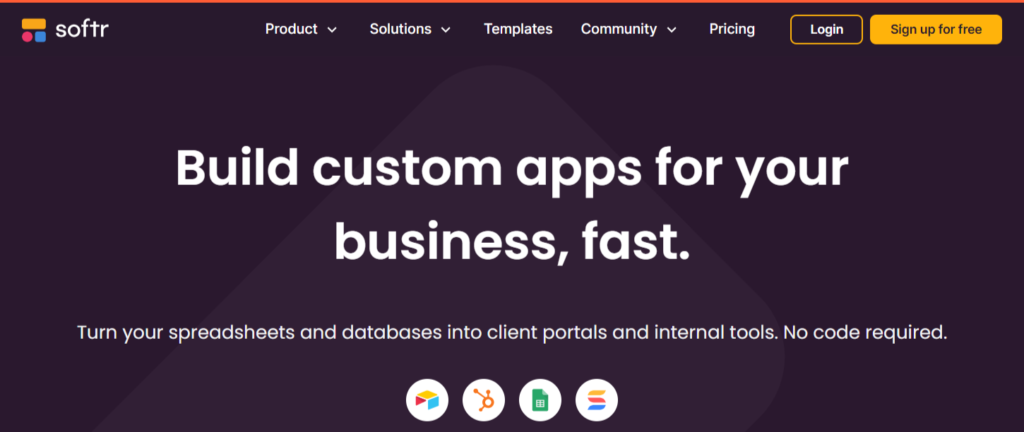
Softr pros:
- Intuitive interface for beginners.
- Easy to get started with pre-built templates.
- No coding is required.
Softr cons:
- Limited customization options compared to more advanced platforms.
- Some features may require technical assistance.
- Pricing for advanced features can be steep.
Softr Price: Free plan available; paid plans start at $29/month.
Don’t let Softr’s simplicity fool you. While it may not boast the intricate aesthetics typically associated with powerful apps, its versatility and customization options are surprisingly robust.
Navigating Softr’s user interface is a breeze. With app settings, page addition, user management controls, and visual themes neatly organized on the left, and a canvas for block stacking in the center, building your app feels intuitive and seamless. Block settings conveniently appear on the right side of the screen upon selection, allowing easy editing of content, layout, and interactivity.
Furthermore, Softr offers seamless integration with two data sources: Airtable and Google Sheets. While templates may lean towards Airtable, the flexibility to switch data sources later alleviates concerns. Starting from the CRM template, I was impressed by its completeness, swiftly implementing desired features without coding. Additional templates, from project management apps to job listing websites, offer pre-built pages, designs, and functionalities, expediting development. For beginners, video tutorials and workshops provide comprehensive guidance, ensuring a solid grasp of Softr’s capabilities within a few hours.
Moreover, Softr’s integration with Zapier allows seamless user management across various apps, enhancing workflow automation. Whether creating or deleting users, Softr ensures effortless synchronization with your actions in other applications.
Best no-code app builder for power and ease of use:
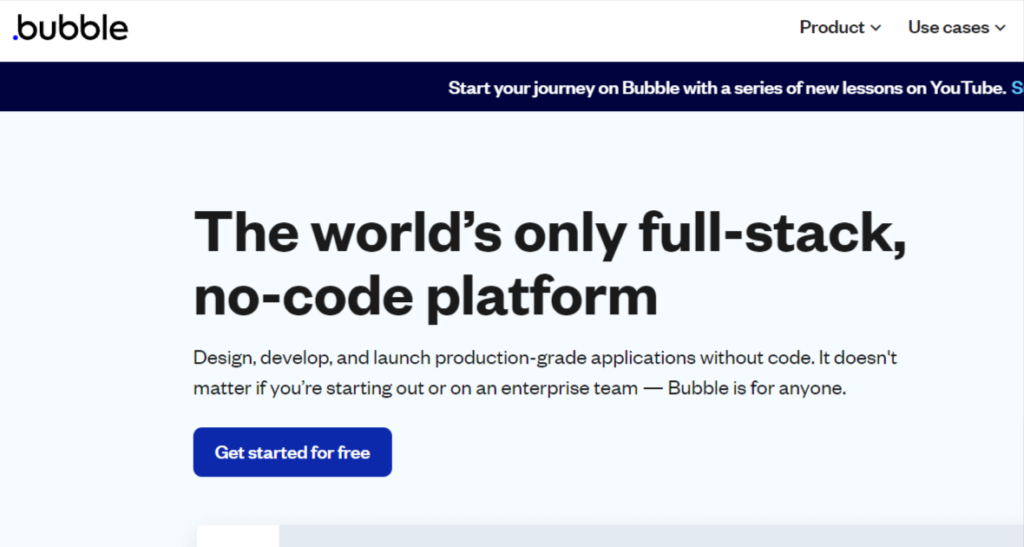
Bubble pros:
- Robust features for creating complex apps.
- Drag-and-drop interface for easy customization.
- Extensive documentation and community support.
Bubble cons:
- The steeper learning curve for beginners.
- Pricing can be higher compared to other platforms.
- Limited flexibility in design compared to custom coding.
Bubble price: Free plan available; paid plans start at $32/month.
Bubble stands out with its visual programming language, offering accessibility for beginners to create apps without code while retaining the flexibility of a low-code platform. You’ll have full control over your app’s appearance, data structure, and performance, making Bubble ideal for prototypes as well as scalable products. Some no-code agencies exclusively rely on Bubble to develop apps for their clients, attesting to its robustness.
A typical day in Bubble’s editor involves crafting the UI with intuitive controls akin to Canva, manipulating data in a spreadsheet-like interface, and orchestrating logic through step-by-step workflows. While the learning curve may be steeper, grasping the fundamentals is engaging and empowers you to dive into building. Challenges inevitably arise, leading you to seek assistance from forums or YouTube. However, overcoming these hurdles fosters a sense of accomplishment and accelerates your progress.
Speaking from personal experience—I’ve utilized Bubble extensively over the years, building six apps and continually refining my skills. Bubble’s active community and wealth of resources, including comprehensive videos, courses, and guides, facilitate learning and problem-solving. Additionally, Bubble’s integration with Zapier expands its capabilities further, allowing seamless connections with thousands of other apps.
If you’re seeking flexibility and advanced logic for your digital product, Bubble is a formidable choice. While the journey may pose challenges for beginners, the result is a robust app accompanied by newfound skills for ongoing enhancement.
Jumpstart your Bubble journey with Bubble Academy or dive into the three-hour crash course to kickstart your development efforts.
Best no-code mobile app builder:
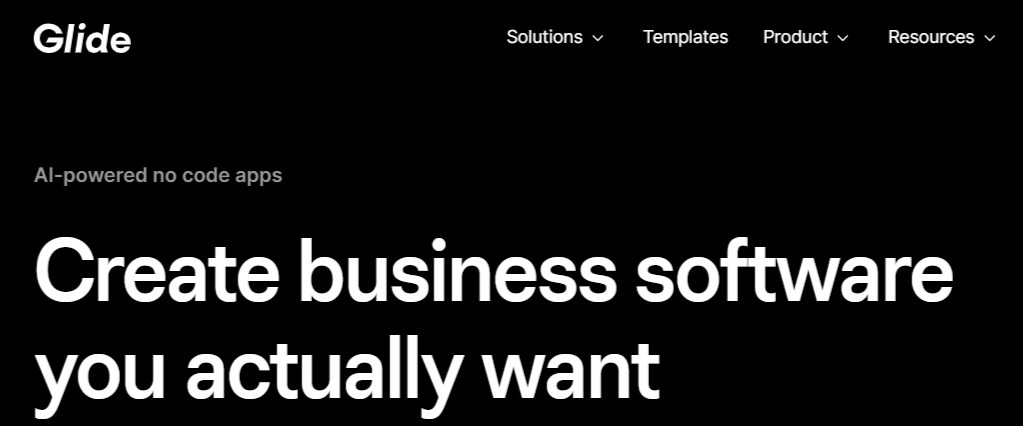
Glide pros:
- Specifically designed for building mobile apps.
- Simple interface for rapid app development.
- Real-time updates and syncing across devices.
Glide cons:
- Limited to mobile app development; not suitable for web apps.
- Some advanced features may require technical knowledge.
- Customization options may be limited compared to other platforms.
Glide shines when it comes to mobile app development, offering seamless functionality and layout structuring tailored for mobile devices. What’s impressive is that the apps created with Glide look great right off the bat, requiring minimal tweaking.
Each page in Glide is referred to as a tab, with eight available layouts to choose from, such as swipe, checklist, or cards, each defining the overall look and functionality. The details layout allows for comprehensive customization, enabling the addition of components like date pickers, buttons, and input fields.
A standout feature of Glide is its ease of installation on both computers and phones with just a few clicks, creating a progressive web app that operates via the internet. This facilitates easy testing, sharing, and distribution of apps. Should you desire to publish your app on the App Store or Google Play, Glide offers a service to streamline the approval process.
While Glide streamlines design aspects, it may restrict UI freedom and advanced functionality in terms of logic building. However, integration with Zapier allows for seamless automation of workflows directly from the app. For beginners, Glide University offers a top-notch learning resource, featuring a diverse collection of high-quality videos focusing on getting started and essential app-building concepts.
Glide’s community feedback suggests it excels in building marketplaces and directories, as demonstrated by Telesomm, a platform where sommeliers showcase their services for enthusiasts to book sessions. Optimized for mobile, Telesomm exemplifies Glide’s capabilities. Explore Telesomm here (all built on Glide) to witness its effectiveness firsthand.
Best no-code app builder for creating powerful mobile apps:
Draftbit (Web)
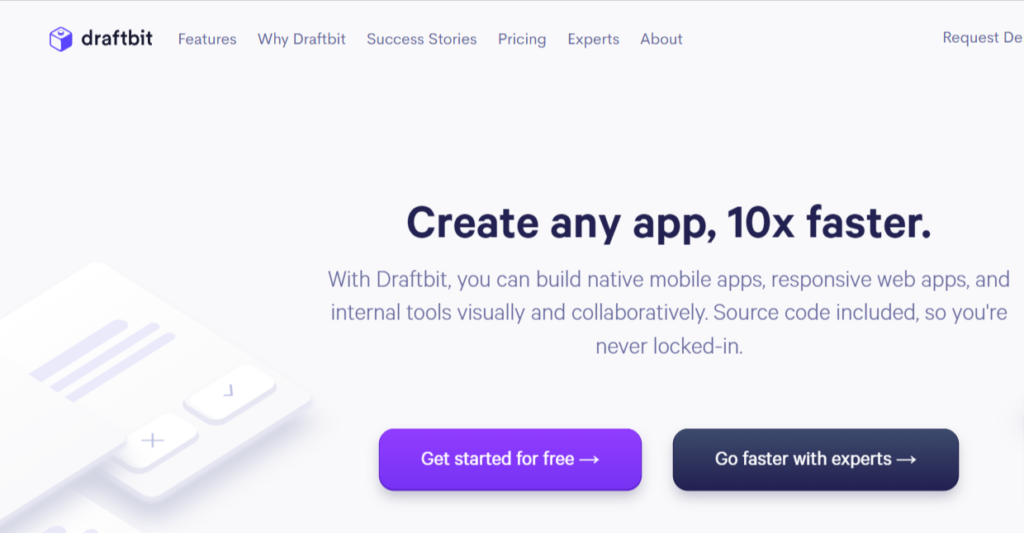
Draftbit pros:
- Comprehensive features for building robust mobile apps.
- Visual editor for easy customization.
- Integration with popular APIs and services.
Draftbit cons:
- Learning curve for beginners.
- Limited support for web app development.
- Pricing may be higher for advanced features.
Draftbit price: Free plan available; paid plans start at $29/month.
If you find yourself craving more control over your app-building experience than what Glide offers, Draftbit emerges as a compelling alternative. With Draftbit, you’ll have the ability to fine-tune every aspect of your user interface and access more advanced logic, albeit with a steeper learning curve.
Rather than relying on pre-built components, Draftbit empowers users to assemble their interfaces using a diverse array of containers and elements, including database views, touchables, icons, and buttons. The interface’s left-side menu facilitates tracking the hierarchy and structure, while the right side provides comprehensive editing options for each component, covering layout, style, database interaction, and behavior.
Behind the scenes, Draftbit dynamically generates code with each edit, ensuring seamless translation of design changes. You can preview your app across various screen sizes or directly on your phone via a test app, enabling real-time feedback during development.
While you won’t need to delve into code yourself, having access to it is beneficial, especially if your app experiences rapid growth. Draftbit offers monthly subscriptions that provide access to their expert developers, allowing you to focus on product design, marketing, or business growth while they handle advanced feature development.
Draftbit’s unique feature set includes the ability to create and control device variables, facilitating the utilization of mobile-specific functionalities and enhancing app performance and privacy. Thorough guides for deploying apps to Google Play and the App Store ensure a smooth process, supplemented by an active community ready to offer assistance whenever needed.
Best no-code app builder for flexibility:
Bildr (Web)

Bildr pros:
- Flexible platform for creating diverse types of apps.
- Drag-and-drop interface for easy customization.
- Integration with third-party services and databases.
Bildr cons:
- Limited documentation and community support compared to other platforms.
- Some advanced features may require technical expertise.
- Pricing may not be competitive for small-scale projects.
Bildr price: Free plan available; paid plans start at $29/month.
Bildr stands out as a versatile platform catering to a diverse range of app types, from web apps and Chrome extensions to progressive web apps for phones and blockchain-enabled apps for Web3. What sets it apart, besides its adaptability, is its highly visual building process.
The user interface, reminiscent of popular prototyping tools like Figma, presents a seamless experience akin to working in a whiteboarding app such as Miro. Everything from app pages to user flows is easily maneuverable within a single canvas, allowing for effortless structuring and rearrangement without the need to toggle between multiple documents.
Despite its user-friendly interface, Bildr leans towards a more technical approach compared to its counterparts. While the drag-and-drop functionality simplifies the process, customization options for elements, styling, connected events, and data are abundant. While the design logic follows CSS principles, users need not delve into coding—menus handle all settings automatically.
Bildr’s feature allowing the creation of reusable patterns streamlines workflow efficiency, enabling the swift deployment of consistent design elements across various pages. Moreover, the platform’s extensive help content, including video tutorials covering beginner to intermediate topics, facilitates learning and best practice adoption. Familiarizing oneself with Bildr’s fundamentals before delving deep ensures accelerated progress toward achieving objectives.
Best no-code app builder for advanced control over your data and infrastructure:
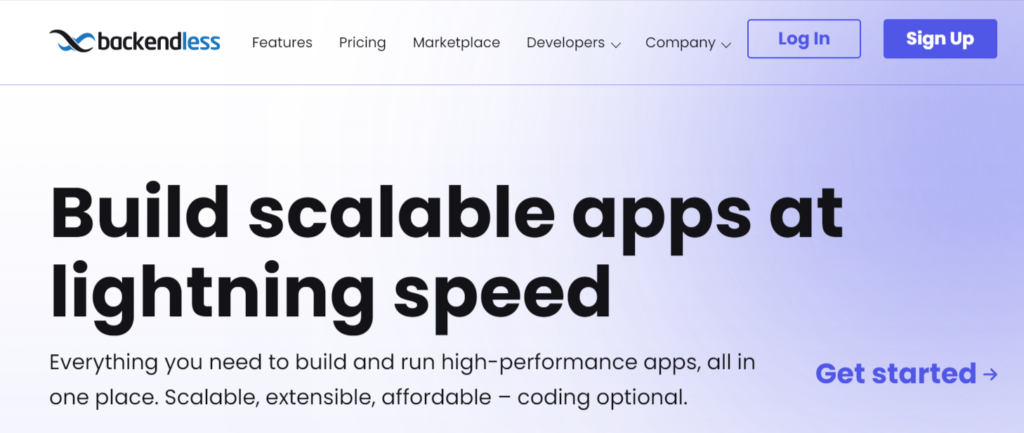
Backendless pros:
- Powerful backend features for managing data and infrastructure.
- User-friendly interface for creating complex applications.
- Scalable solutions were suitable for businesses of all sizes.
Backendless cons:
- Learning curve for beginners.
- Pricing may be higher compared to simpler platforms.
- Limited customization options for front-end design.
Backendless price: Free plan available; paid plans start at $15/month.
Backendless caters to the daring, tech-savvy individuals among us. While it may not rank high in ease of use compared to its counterparts on this list, its inclusion is warranted due to its exceptional flexibility, comprehensive documentation, and supportive community.
Originally established as a backend-as-a-service platform, Backendless evolved to offer a UI builder, allowing users to construct interfaces that seamlessly integrate with their databases. Whether with or without code, Backendless adopts a codeless approach, bridging the gap between traditional coding and no-code development. This slightly steeper learning curve is mitigated by Backendless Missions, interactive tasks designed to acquaint users with the platform’s intricacies, from backend setup to frontend integration.
While navigating Backendless may initially seem daunting, the platform’s structure and terminology closely align with conventional app development, providing valuable insight into the app-building process. Despite requiring more time to master, Backendless offers a rewarding learning experience, equipping users with essential skills for future endeavors in app development.
Embark on your Backendless journey by exploring the guided Missions conveniently accessible through the dashboard’s left-side menu. Whether you’re seeking to expand your skill set or bring your app ideas to life, Backendless offers an ideal platform to achieve both objectives simultaneously.
Best no-code app builder for creating apps for multiple platforms:
FlutterFlow (Web)

FlutterFlow pros:
- Cross-platform support for building apps for iOS, Android, and web.
- Visual editor with real-time preview for rapid development.
- Integration with Flutter ecosystem for advanced functionality.
FlutterFlow cons:
- Limited documentation and community support compared to other platforms.
- Some features may require familiarity with the Flutter framework.
- Pricing may be higher compared to simpler platforms.
FlutterFlow price: Free plan available; paid plans start at $30/month.
FlutterFlow, crafted by two former Google engineers atop the Flutter framework, stands as a comprehensive platform for crafting apps across multiple platforms, from Android and iOS to Windows, Mac, and Linux systems. With an extensive array of elements available for deployment and a robust element editor offering a plethora of settings, FlutterFlow empowers users to fine-tune every aspect of their apps. Moreover, the platform offers full-featured templates for quick-starting projects, along with the option to leverage its AI engine to generate screens based on user prompts—a feature that streamlines the development process significantly.
However, navigating FlutterFlow’s power comes with its fair share of challenges. Mastering the platform can be daunting, particularly for beginners, and its preference for Firebase as a data source adds an additional layer of complexity. Firebase, while potent, requires a certain level of technical proficiency to fully harness its capabilities, and its document-based database structure may pose a learning curve for those accustomed to relational models. Nevertheless, Firebase offers scalability and a generous free plan, making it a viable choice for long-term app development endeavors.
If you’re undeterred by the challenge and eager to delve into the intricacies of app development, FlutterFlow presents an excellent opportunity to gain invaluable technical skills and a deeper understanding of the development process. Alternatively, for those seeking a gentler introduction to app building, starting with platforms like Softr, Bubble, or Draftbit before progressing to FlutterFlow’s advanced features may prove beneficial in laying a solid foundation for future endeavors.
Wrap Up:
In the realm of app development without code, various platforms cater to different needs. From Softr’s simplicity to Backendless’s complexity, each offers unique benefits. Whether you’re a beginner or a seasoned developer, there’s a platform to suit your needs, democratizing app development and empowering users to bring their ideas to life without traditional coding expertise.
FAQs
- What is a no-code app builder?
A no-code app builder is a platform that enables individuals to create functional mobile or web applications without the need for traditional coding skills. Users can design interfaces, define app logic, and integrate data sources using visual interfaces and pre-built components. - Can I build complex apps without coding experience?
Yes, many no-code app builders offer intuitive interfaces and drag-and-drop functionality, allowing users with little to no coding experience to create sophisticated applications. While there may be a learning curve, comprehensive tutorials, and support resources are often available to help users get started. - Are there limitations to what I can build with no-code app builders?
While no-code app builders provide powerful tools for creating a wide range of applications, there may be some limitations compared to traditional coding. Complex functionalities or highly customized features may require more advanced coding knowledge or integration with external services. - How scalable are apps built with no-code platforms?
Apps built with no-code platforms can be highly scalable, depending on the chosen platform and architecture. Many platforms offer scalability features such as cloud hosting and database management, allowing apps to accommodate growing user bases and increased functionality over time. However, it’s essential to consider the scalability options and limitations of each platform when designing and building your app.
- How to Turn Off Sticky Keys on Windows 10 - April 27, 2024
- What is a Hotmail? - April 26, 2024
- What is a Console? - April 25, 2024
